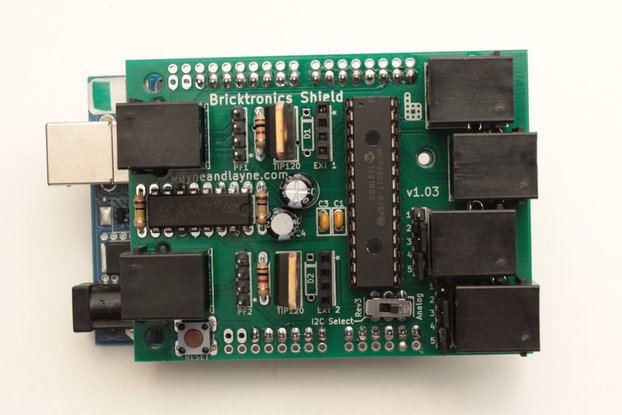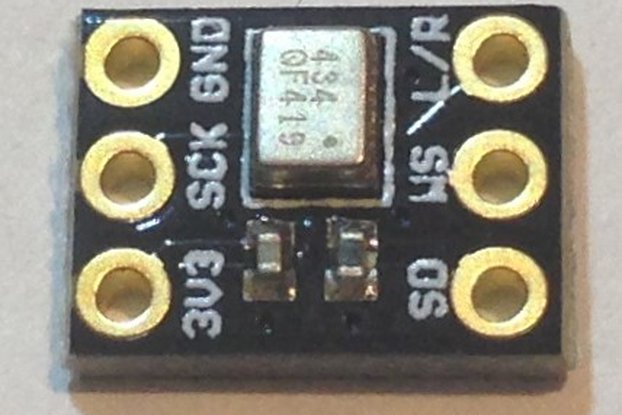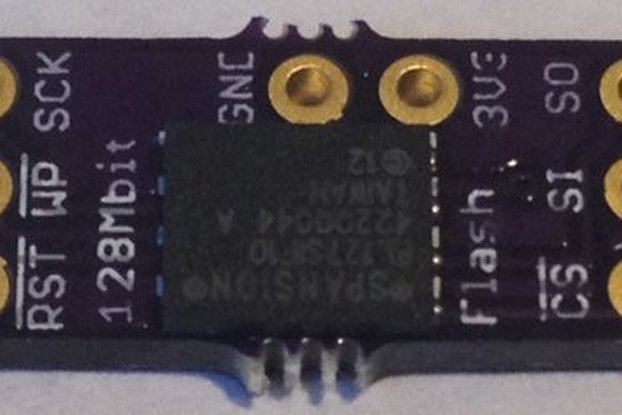Brushed motor UAV flight controller using ESP8266EX SoC
Designed by Pesky Products in United States of America
This product is no longer available for sale.
The seller may be offering an improved version or it may be hanging out on the beach, enjoying the retired life.

$88.55
Free Shipping!

$96.60
Free Shipping!

$44.00
Free Shipping!

$599.00
Free Shipping!
ESP8266 Flight Controllers are here! Flight control software will be provided to all purchasers of the board on request. We will also offer the FC boards with various frame+motor combinations as kits…
Read More…ESP8266 Flight Controllers are here!
Flight control software will be provided to all purchasers of the board on request. We will also offer the FC boards with various frame+motor combinations as kits and even fully assembled and tested UAVs.
This is a UAV flight controller on a small (0.71 in x 1.22 in) 0.5-mm-thick four-layer pc board using the ESP8266EX Tensilica Xtensa system-on-chip, the EM7180+MPU9250+MS5637 (Ultimate Sensor Fusion Solution) for motion sensing and low on-resistance (20 mOhm) n-type DMN2041L MOSFets to drive up to four brushed motors using PWM signals. The ESP8266EX employs a 32-bit RISC CPU based on the Tensilica Xtensa LX106 running at 80 MHz (or overclocked to 160 MHz). It has a 64 KB boot ROM, 64 KB instruction RAM and 96 KB data RAM.
There is a 4 MByte Micron N25Q032A13EF440 SPI NOR flash on the board for ESP8266 serial and OTA programming, and for user file storage or flight data logging. The board is powered by a single 1S LiPo battery (not included). There is a TI TPS61240 5 V boost converter to supply power to the rc radio (not included) and a NCP161 3V3 LDO (150 mV typical dropout voltage) voltage regulator to provide power to the ESP8266 and motion sensing circuitry. The power section, including a reverse-polarity-protection diode, is sized to provide up to 450 mA to the ESP8266 and associated control and sensing circuitry from the LiPo battery. The 5 V boost converter ensures that the voltage and current required to run the radio and ESP8266 are sufficient for stable operation even when the motors are at their full power. There is a 1 M/ 300K Ohm voltage divider on VBAT to allow real-time monitoring of the battery voltage via the ESP8266 ADC.
All of the GPIOs {GPIO 1, 3 (UART), GPIO 0, 2 (I2C), GPIO 4, 5, 12, 13, 14, 15, 16} are broken out (GPIO 6 - 11 are for the QSPI flash) so this board can also be used to drive ESCs for use with brushless motors, and the flight controller also makes a great general purpose robotic control board.
Solder a 1.25-inch-long, 28-gauge insulated copper wire to the solder pad for a simple but effective RF antenna. Transmission range is easily 40 feet in the open, plenty for a robot or small UAV. This means real-time telemetry can be broadcast to a tablet or smartphone, and that control of the robot or UAV via the embedded wifi is straightforward and practical.
The use of the Ultimate Sensor Fusion Solution allows stable, headless flight even with the smallest of UAVs because of the superior heading accuracy and effective magnetic anomaly detection and correction afforded by the EM7180 and its embedded algorithms. The orientation estimation remains accurate even in the presence of strong fixed magnetic fields from the nearby brushed DC motors but also from the stray fields generated by the several amps of current flowing at the highest motor drive.
The flight controller boards made in the initial production run use 0.5-mm thick pcbs to reduce the weight of the board from 2.1 g (for the 1.6-mm-thick hand-made pcbs) to 1.1 g; 1.0 g matters when flying ultra-small UAVs that weigh less than 50 g!
With the U816 frame and motors, which we also sell as a kit with the flight controller, total weight of the UAV is 26 g without battery. For a typical 350 mAH battery which provides up to 8 minutes of flight time, the total flying weight is less than 35 g! And this small craft using this flight controller flies as stably and smoothly as much more expensive drones weighing 20 times as much!
We have detailed documentation (see Datasheet and BOM to the right) that described how to program the board, how to tune the flight characteristics and operate the quadcopter suitable for both beginners and experienced pilots. And check out the videos below demonstrating headless flight in a 35 g UAV!
The ESP8266 SoC is a remarkably powerful and versatile SoC considering its small size (5 mm x 5 mm) and low cost (~$1 in volume). It makes a great control platform for robotics and many other applications. In addition to fast processing and low cost, it has embedded wifi and, most importantly, it is programmable via an Arduino IDE so it is very easy to use. I decided to design a small but generally useful pcb using the ESP8266 and the obvious first application is to use it in a quadcopter!
The easiest way to make use of this flight controller is to solder a conventional RC radio (receiver) onto the board using 5V/GND and GPIO 13 as the signal pin. Then use a conventional transmitter to control the UAV.
But this flight controller has an ESP8266 SoC with embedded wifi capability, and we have designed a custom transmitter that also has an ESP8266 SoC and allows simple control of the UAV. This will be available soon.
This is a very small and light (1.1 g) pcb with almost everything you need to control a UAV. The intended use is to replace the electronic control board in a commercial quadcopter (i.e., a Hubsan or UDI U816) with this flight controller board that you can then program yourself using the Arduino IDE. We have flight control software that we will make available for customers to use. Or buy the rest of the parts you will need separately (350 mAH LiPo battery, frame, brushed motors, rc receiver and transmitter) and you should be able to assemble and program your very own quadcopter or rolling robot or...whatever you can imagine!
There is a collection of sketches you can use to program the board using the Arduino IDE to get absolute orientation, pressure and temperature, control the PWM signals that drive the motor, blink the leds, etc. We will be adding flight control software for use with the Arduino IDE also.
Order the pcb from OSH Park and assemble your own, or order the fully assembled and tested flight controller from me and see how fast you can get your quadcopter flying!
Here's a video of the flight controller driving brushless DC motors in a Super X frame.
Here's a video of an advanced version of the flight control board using the ESP8285 and a PCA9685 16-channel PWM expander controlling four DRV8835 dual-H-Bridge motor drivers supporting either 4, 6, or 8 DC brushed motors, in this case configured as a hex copter. We will be selling this version later this Summer.
Below is the ESP8266 Flight Controller paired with a U816 frame and motors demonstrating stable, headless flight:
Danville, CA, United States of America
Ships from United States of America.
180 Reviews | 5,439 Orders

$49.95
Free Shipping!

$5.95
Free Shipping!

$35.95
Free Shipping!

$35.95
Free Shipping!

$49.95
Free Shipping!

$29.95
Free Shipping!

$19.95
Free Shipping!

$12.95
Free Shipping!

$45.00
Free Shipping!

$49.95
Free Shipping!

$29.95
Free Shipping!

$8.80
Free Shipping!
By clicking Register, you confirm that you accept our Terms & Conditions
We recognize our top users by making them a Tindarian. Tindarians have access to secret & unreleased features.
We look for the most active & best members of the Tindie community, and invite them to join. There isn't a selection process or form to fill out. The only way to become a Tindarian is by being a nice & active member of the Tindie community!
